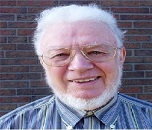- Nano-Biomaterials | Bio Nanotechnology | Nano Pharmaceuticals | Emerging Trends in Nanotechnology | Nano Biomolecular Engineering | Nanomedicine | Regulation of Nanotechnology
Location: 1

Chair
Shaker A Mousa
Albany college of Pharmacy and Health Science, USA
Session Introduction
Mohammad Soltanieh
Sharif University of Technology, Iran
Title: Patent-based technology life cycle analysis: The case of the application of nano-FAU and nano-ZSM-5 zeolites in petroleum industry
Biography:
Saeed Soltanali holds a PhD from SUNY at Buffalo in 1978 and BS from Sharif University of Technology, Tehran, Iran. He is an Adjunct Professor in the Department of Chemical and Bimolecular Engineering at the University of Maryland (UMD) and has been a visiting Professor at UMD, MIT, RPI and SUNY. He has over 35 years of academic and executive experiences in Chemical Engineering, Energy and Environment including Climate Change. He has over 90 papers in international scientific peer reviewed journals and serving as a reviewer of several international journals. He has presented over 130 papers at national and international conferences. He is a distinguished Professor and the winner of several environmental awards and recognitions. He is a Nobel Laureate for Peace in 2007 for his contribution as a coordinating lead author of the special report on carbon capture and storage of the intergovernmental panel on climate change (IPCC).
Abstract:
Zeolites are porous aluminosilicates, which are very useful due to their unique features such as high surface area, porosity, ion exchange properties, etc. In recent years, nano-zeolites have been of interest among researchers, which has led to amplification in the number of papers as well as patents. One of the widely used methods to specify the level of a technology in the S-Curve is patent analysis. In this study patent analysis was applied in order to investigate some cases such as patent activity, active countries, main applicants, inventors and researchers, application domains etc. in nano-FAU and nano-ZSM-5 zeolites technologies. The procedure for patent analysis started with collecting the patents from the Internet, extracting the main CPC and IPC codes and finally applying the main Cooperative Patent Classification (CPC) codes and International Patent Classification (IPC) codes in valid patent databases. The results of analysis, which was extracted from valid databases, concluded that zeolite technology is in maturity stage of the scheme of integration for technological S-Curve and patent activities and patent registration in zeolite technology are in increasing trend. Furthermore, active countries, companies and researchers were determined. Finally the main domains in zeolite application were pointed out.
John M Tomich
Kansas State University, USA
Title: Delivery of lethal dsRNA in insect diets by branched amphiphilic peptide nano-capsules
Biography:
John M Tomich obtained his PhD in Chemistry from the University of Waterloo (Ontario, CANADA) and completed fellowships at the University of Delaware and Caltech. He is currently Professor of Biochemistry and Molecular Biophysics at Kansas State University. He has published over 15o journal articles, book chapters, published patents and books. He has severed on a number of NIH study sections and serves as an external advisor to several NIH program projects. His lab’s interests have focused on utilizing Nature’s rules for peptide self-assembly to design new structures with unique properties. We currently study patented bilayer delimited nano-capsules formed by the self-assembly of branched amphipathic peptides.
Abstract:
Branched Amphipathic Peptide Capsules (BAPCs) are biologically derived, bilayer delimited, nano-vesicles capable of being coated by or encapsulating a wide variety of solutes. The vesicles and their cargos are readily taken up by cells and become localized in the peri-nuclear region of cells. When BAPCs are mixed with DNA, the BAPCs act as cationic nucleation centers around which DNA winds. The BAPCs-DNA nanoparticles are capable of delivering plasmid DNA and RNAs in vivo and in vitro yielding high transfection rates and minimal cytotoxicity. In this study, we inhibited expression of two insect genes, BiP and Armet, through the ingestion of dsRNA complexed with BAPCs. The dsRNA-BAPCs complexes were added to the diets of two insect species from two Orders: Acyrthosiphon pisum and Tribolium castaneum. The gene transcripts tested (BiP and Armet) are part of the unfolded protein response (UPR) and suppressing their translation resulted in lethality. For Acyrthosiphon pisum, ingestion of <10 ng of BiP-dsRNA associated with BAPCs led to the premature death of the aphids (t1/2=4 - 5 days) compared to ingestion of the same amounts of free BiP-dsRNA (t1/2=11-12 days). Tribolium was effectively killed by ingestion (by larvae only) using a combination of BiP-dsRNA and Armet-dsRNA complexed with BAPCs (75% of the subjects, n=30) died as larvae or during eclosion (the emergence of adults from pupae). Feeding the two dsRNA alone resulted in fewer deaths (30% with n=30). These results show that complexation of dsRNA with BAPCs greatly enhances the oral delivery of dsRNA over dsRNA alone in the diet. This approach provides a simpler method of delivering dsRNA compared to microinjection for studying in vivo protein function and for developing novel strategies for pest management.
J Manjunath
Acharya N G Ranga Agricultural University, India
Title: Nanoparticulate encapsulation of neem oil and NSKE for the effective control of peanut seed beetle

Biography:
J Manjunath has obtained his Master’s degree from Acharya N G Ranga Agricultural University, India and has been working as a Scientist of Plant Protection, especially in Entomology. He has been involving in research in insect pest management and screening of hybrids and varieties of major crops like, foxtail millets, paddy, jowar, tobacco, and groundnut and sun flower. He is also actively involved in artificial screening of many varieties like, SiA 3085 and SiA 3156 of foxtail millets, Nandyal senaga-1 of chickpea and Nandyal pogaku-1 of tobacco which were recently released, labeled and notified in India. He published several national and international peer reviewed research papers and numerous popular articles. He used to organize several public meetings with the farmers to disseminate the crop based plant protection information to the farming community. At present, his research interest is on nano based molecules for insect management in stored grains.
Abstract:
Peanut (Arachis hypogaea L) seed beetle (Caryedon serratus O) causes damage to the peanut seed to the extent of 20% over a period of 5 months of storage. Consequently, the economic loss recorded there by meets more or less to the production cost of the peanut. Therefore, there is an urgency to address this problem to boost the economic status of the farmers. Nanoscale materials (measured size is less than 99 nm in at least one dimension with quantum confinement) pose unusual properties compared to their bulk counter parts and use of these materials in agriculture and allied sectors is still at its infancy stage. Neem oil and neem based products are well known for their antifeedant properties against insects and are been widely used in controlling stored grain pests. However, the efficacy of neem based products in doing so is considerably low. Herein, we formulated nanoscale zinc oxide and nanoscale chitosan based neem oil and NSKE formulations for the first time and evaluated these nanoparticulate formulations against peanut seed beetle over a period of 6 months. The results revealed that up to 4 months there was no infestation, no pod damage and adult emergence with nanoparticulate formulation treatments which was more unlikely with the control (No application). Peanut pod weight loss (54.61%) and pod damage by count (3.82%) was significantly low with nanochitosan encapsulated NSKE compared to control (83.7%, 49.3% respectively). Thus nanoparticulate encapsulation of neem based products significantly affects the infestation of peanut beetle and pod damage thereby.
Dar-Bin Shieh
National Cheng Kung University, Taiwan
Title: Fe3-δO4 nanoparticles inspired clinical therapeutics in cancer and Clostridium difficile infection

Biography:
Dar-Bin Shieh holds the title of Distinguished Professor, Institute of Oral Medicine, College of Medicine, and National Cheng Kung University (NCKU). His research interests include nanomedicine, oral diagnosis and pathology, molecular biology, cancer biology, cryo-EM, mitochondria. He is a recipient of many major awards, including, the Nano Elite Award, Ministry of Economics, Taiwan and the Outstanding Research Award of Taiwan National Science Council. He holds a numbers of international patents, including one on nano-carrier, complex of anticancer drug, pharmaceutical composition and complex manufacturing for treating cancer. He and the PI have collaborated since 2012 on the molecular and cellular basis of chemoresistance in ovarian and head- and-neck cancers, and have recently published jointly two seminal papers (PNAS and International Journal of Cancer).
Abstract:
Clostridium difficile infection (CDI) and cancer both are important causes of global healthcare cahllenges. Resistance of CD spores as well as cancer cells to various therapeutic measures post a significant threat. Nanomaterials have been explored for applications in anti-microbials as well as cancer therapy with intrinsic advantages of low drug-resistance issues and high efficacy. We discovered the 22 nm octahedral Fe3-δO4 single crystal nanoparticles with a strong saturation magnetization (94 emu/g) and exhibited inhibitory effect to CD spore germination in vitro and in vivo while at the same time serve as an excellent convertor for RF induced nano-heater for cancer hyperthermia therapy. The nanocrystal presented excellent MRI contrast effect and showed a dose dependent inhibition of CD spores germination (62% growth inhibition at 500 μg/mL) close to that of sodium hypochlorite. CDI animal model established in NF-κB-reporter mice presented significant bowel inflammation in the MOCK compared to Fe3-δO4 nanoparticles treated group as revealed by in vivo imaging system. Pro-inflammatory cytokines including IL-1β, TNF-α, and INF-γ and inflammatory cell infiltrations were significantly suppressed after nanoparticle treatment. In addition, the Fe3-δO4 nanoparticles (500 μg/mL) did not alter the microbiota and induce the liver or kidney damage in vivo. On the other hand, we observed significant anti-cancer efficacy upon integration of RF-hypertehrmia with synchronized thermal responsive chemotherapy in both in vitro and in vivo with complete tumor remission achieved with targeting add-on. These results provide nano-material based strategy for infection and cancer therapeutics that encourage further clinical translational development.
Alexandre Loukanov
Saitama University, Japan
Title: Nanomachine based on carbon nanodots and iron oxide for efficient infrared therapy of breast cancer

Biography:
Alexandre Loukanov has completed his PhD from the Graduate University for Advanced Studies (SOKENDAI), Japan and DSc (Doctor of Sciences) from University for Mining and Geology, Sofia, Bulgaria. He is currently working as a Professor at Saitama University, Japan, invited Professor at Arkansas University for Medical Sciences, USA and Vice President of the European Nanoscience and Nanotechnology Association. He has published more than 60 research articles in the fields of Basic and Medical Nanotechnology.
Abstract:
Nanocomposites made of iron oxide core, which is covalently capped with carbon nanodots have significant inhibitory effect on B16F10 cancer cells in the presence of near infrared irradiation (NIR). The reason is because the N-doped carbon nanodots (C-dots) can convert the lower energy NIR to higher energy blue light, which induce emission of electrons from the semiconductive Fe2O3 and generate reactive oxygen species. This process is known as up conversion photoluminescence and the subsequent photocatalytic oxidation was proved by bleaching of the organic dye rhodamine B. The inhibition effect of Fe2O3@C-dots was measured on the breast cancer cells B16F10 by in vitro scratch bioassay. In dark condition the nanomaterial exhibit minimal toxicity to the cells. However, by treatment with NIR irradiation in the range 700 ~ 800 nm the cancer cells were inhibited. The next step was to modify the nanocomposite Fe2O3@C-dots with oligonucleotide aptamers in order to achieve a structural recognition of cellular wall with followed higher specificity to cancer cells. Our experiments demonstrated that the normal cells are not object of inhibition, because they have enzymes to destroy such DNA nanomachines. Nevertheless, it remains toxic to the cancer cell which has lack of ability to protect from the nanomachines toxic effect. In conclusion, the photoactivatable iron oxide@Cdots–aptamer nanomachine may potentially be exploited in the photodynamic-related applications in the cancer therapy.
Kenneth J Woycechowsky
Tianjin University, China
Title: Protein capsids as molecular containers: Cargo loading and controlled release

Biography:
Kenneth J Woycechowsky has expertise in the assembly, folding, function, and engineering of proteins. His work on protein capsid assembly and the engineering of protein capsids to construct novel molecular encapsulation systems helps lay the ground work for next-generation nanoreactors and drug delivery systems. He has experience in research and teaching at universities in China, the USA, and Switzerland. He obtained a BS in Chemistry from Penn State University and a PhD in Biochemistry from the University of Wisconsin-Madison. His research training emphasized a multi-disciplinary approach to tackling cutting-edge problems in protein structure and function. He is currently a Professor in the School of Pharmaceutical Science and Technology at Tianjin University.
Abstract:
Statement of the Problem: Protein capsids form closed shell structures via self-assembly that can host various cargo molecules in their hollow interiors. These molecular containers can be useful for applications such as drug delivery, nanoreactors, and materials synthesis. These applications often require the encapsulation of cargo molecules followed by their eventual release from the capsid. However, general methods for loading and unloading cargo molecules are lacking. My research aims to endow protein capsids with the ability to encapsulate different cargo molecules and to develop non-denaturing cargo release mechanisms.
Methodology & Theoretical Orientation: The capsids formed by bacterial lumazine synthases (LS’s) are attractive structures for engineering molecular encapsulation systems. Using DNA mutagenesis and covalent protein modification methods, LS capsids and potential guests were convergently engineered to generate interactions that are localized to the capsid interior and that can potentially be modulated by changing the solution conditions. Structural and functional characterizations of the resulting complexes are carried out using biochemical and biophysical techniques.
Findings: Using a charge complementarity strategy, engineered LS capsids were loaded with RNA cargoes during bacterial production. Similarly, a natural LS capsid was loaded with a protein bearing a peptide tag derived from its native guest. The protein cargo was released from the capsid by a mild change in the buffer conditions. Lastly, small-molecule cargo was loaded into an intact engineered LS capsid using a two-step thiol-disulfide exchange process. The resulting disulfide bond linking the cargo to the capsid can be broken by reducing agents, allowing diffusion of the cargo out of the capsid.
Conclusion & Significance: These strategies for reversible guest encapsulation extend the functional versatility of the LS capsid as a scaffold for bionanotechnology. The ability to control both cargo loading and release should be particularly useful for the development of new drug delivery systems.
T N V K V Prasad
Acharya N G Ranga Agricultural University, India
Title: Nanoparticulate delivery of zinc into plants-The essential for global food and nutritional security

Biography:
T N V K V Prasad is now Senior Scientist and In-Charge of Nanotechnology laboratory at Institute of Frontier Technology, Regional Agricultural Research Station, Acharya N G Ranga Agricultural University, Tirupati, and recognized as National Resource Person in Nanotechnology, India. He completed his MS and PhD in Physics with Materials Science specialization from Andhra University, Visakhapatnam India. He received prestigious Endeavour Research Award from the Govt. of Australia in 2010 to pursue Post-doctoral research in Nanotechnology at University of South Australia, Australia. He also did Post-doctoral research in Nanotechnology at University of Kentucky, Lexington, USA in 2011. He introduced the concept of Agri-nanotechnology (Applications of nanotechnology in agriculture and allied science) and filed/sanctioned two patents. More than 100 research papers were published in peer-reviewed journals and authored two book chapters and coined the term Phyconanotechnology. He received prestigious Dr. AV Krishnaiah gold medal for best research in Agricultural Sciences. He also received many best presentation awards in national and international conferences. He was the Founder Secretary of Society of Agri-Nanotechnology and Organizing Secretary of AgriNANO-2015. He visited many countries including USA, Australia, Malaysia, and Thailand as a delegate of high-level committee to study the agricultural curriculum. Currently, his research focus is on the development of agriculturally beneficial nanoscale materials and study of their behavior in agro-ecosystems.
Abstract:
Agri-nanotechnology (Application of nanotechnology in agriculture and allied sciences) is considered to be one of the emerging branches of Nano biotechnology. Nanoparticulate delivery of nutrients into crop plants was promising and proved to be enhancing the productivity, quality and nutrient bio fortification. Zinc is one of the important micronutrients required by crop plants and its role is vital in stimulation of biochemical processes (co-factor of all the six classes of enzymes) and nutrient absorption. Zinc has the ability of providing resistance to the cultivating plants against biotic and abiotic stresses. However, compared to other micronutrients, zinc deficiencies are wide spread and affect crop yields significantly across the globe. Zinc deficiency alone contributes to the tune of 20-30% crop yield loss and sufficiency of zinc increases the disease resistance and reproductively in humans. Therefore, the essentiality of zinc supplement concerns not only crop productivity but also human health. Foliar application (twice) of nanoscale zinc oxide (n-ZnO) relatively enhanced the yields of groundnut to the extent of 30%. Approximately, 15% yield enhancement has been recorded in maize with the foliar application of spherical shaped n-ZnO with mean size of 25 nm. Interestingly, with the application of 100 ppm of n-ZnO, the grain zinc content was increased to 36 ppm. Cabbage and cauliflower crops responded well to the n-ZnO by recording significant yields (12%) over other forms of zinc supplement tested and similar results were recorded with the black gram crop (18% yield enhancement). Thus, nanoparticulate delivery of plant nutrients, zinc in particular, is effective and ensures second green revolution through nanotechnology.
- Emerging Trends in Nanotechnology | Impact of Nano Biotechnology | Regulation of Nanotechnology | Nano-Biomaterials
Location: 1

Chair
Gerd Kaupp
University of Oldenburg, Germany




